JRDG Company Special – Model 10, 12 and 112
These models are on the same page because they have a lot in common:
Model 10 (1999-2004)
Retail price in 2002 in the Netherlands 10.990 euro
Model 12 (1999-2004)
Retail price in 2002 in the Netherlands 21.990 euro
Model 112 (1999-2011)
Retail price in 2002 in the Netherlands 7.490 euro
With the introduction of these models, BPS was no longer an option.
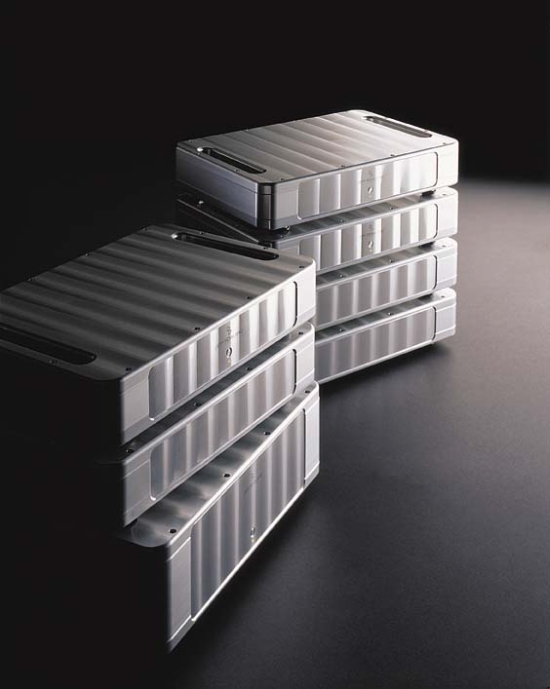
Above bottom left is the Model 112 with the Model 10 on top. On the right is a Model 12 stack.
Model 10
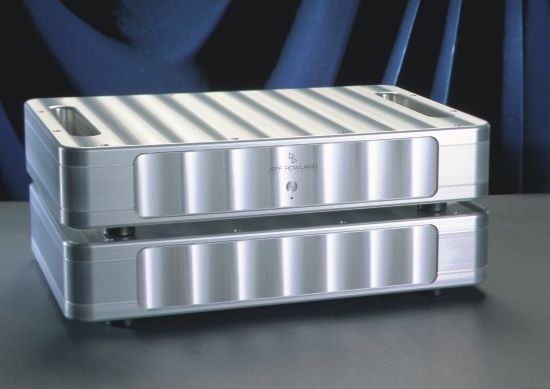
The model 10 is the stereo version of the Model 12. Inside the two are very similar except that all circuitry is halved and divided over 2 chassis instead of 4. The model 10, 12 and 112 were the first amps in which the new LM3886 IC’s were used in place of bipolar transistors. These IC’s not only carry out the amplification but also allow extremely accurate bias and temperature control and also occupy very little circuit “real estate,” dramatically reducing capacitive and dielectric storage effects, as well as simplifying the overall signal path. Also novel is the application of a so called Power Buss in which positive and negative DC current is transferred to each output device by dual polarity. Within these buss bars, opposite phases are carried side by side, the two signal halves separated by a tiny 9 mil insulator. These bars can be easily identified as the bright red/orange metal bars running across the inside of the amp. One common question is whether the output section of the amplifier is biased into Class-A operation. Technically, the answer is “yes,” as the exceptional linearity of the output section design achieves the advantages of pure Class-A operation. Using the “Intelligent Power Transistor with Gain” system keeps the output section properly biased at all times to eliminate crossover distortion caused by the output transistors during turn-on and turn-off.
Sound
The model 10 I owned was sonically a mixed bag. I loved its fluid, velvety highs and nimble bass. But somehow it always sounded un-rhythmic. Although it was fast and accurate, its transients were also rounded off in a sense, giving a slow impression even though strictly speaking it was fast. No matter how many cables or components I swapped it would just not come to terms with my B&W N804’s. These speakers are already not the fastest guns around, nor are they very easy to drive, but when I later bought the model sixes, all was immediately solved. With the sixes in my system the sound was quick, fast, dynamic, and luckily the Rowland magic was retained. In conclusion I feel that the model 10 is somewhat of an exception in the rowland line of amplifiers, sounding offbeat somehow. It may or may not be coincidence that it was phased out after being in the product palette for only a couple of years.
Sound – 2015 comparisons
Very recently I had the opportunity to listen to the 10 again because a friend was willing to bring it over for some testing. At the same time another friend was willing to bring along his 201’s. As I still had the 525 over for review this seemed like the perfect opportunity to make an overall comparison using a pair of Martin Logan Ethos hybrid electrostatic speakers. This time the Model 10 sounded marvellous. See the link below.
Class AB vs Class D – Model 525 compared to Model 201, Model 10 and Model 6
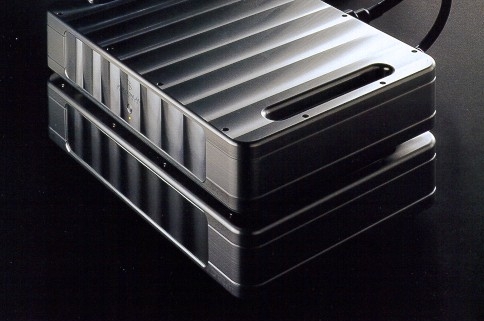
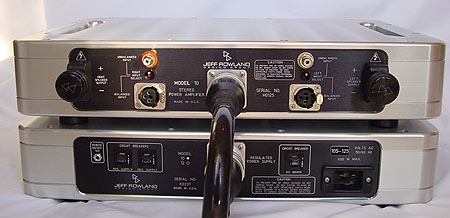
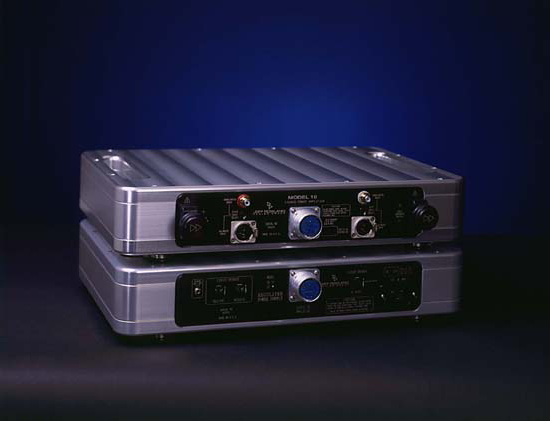
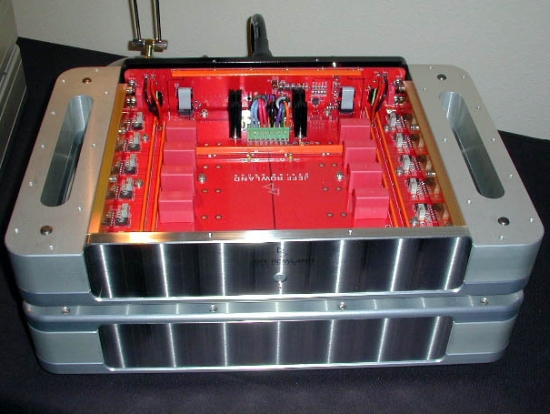
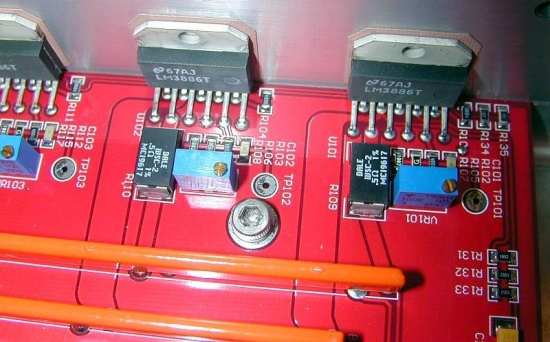
Above: LM3886 IC’s in the output stage rather than bipolar transistors
Model 10Ti (Mystery Model)
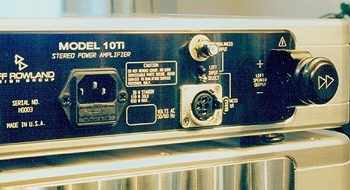
The rear panel of this mystery model labelled Model 10Ti is interesting because both model 10 and 12 normally have the IEC power inlet on the power supply unit, not on the same unit that houses the amplification. Also for the production units a 20 amp version inlet is used, not the 16 amp version as pictured.
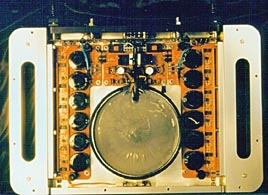
The inside picture above is interesting because the model 10 never had a linear power supply. The 112 does, but there, it is situated on the other side. Maybe it was a prototype for the actual Model 10 or perhaps a predecessor to the 112, although the amount of capacitors is different between the two models. In any event it looks like this is a single chassis design, with the power transformer in the same housing as the power output section. Outside of the pictures above I have never seen a Model 10Ti and my guess is that it was never fully released. The best clue for this being the case is that the Model 10Ti manual is not on the JRDG website, the Model 1o is. Judging from all their other manuals it seems that they always make the most recent manual available per model.
Model 12
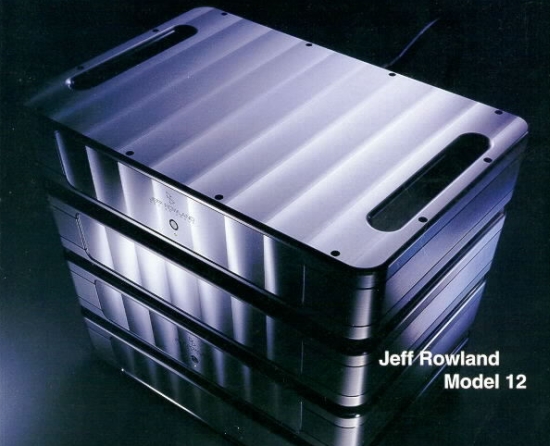
The model 12 is a dual mono version of the Model 10. Inside are no differences that I am aware of except that all circuitry is doubled up and divided over 4 chassis instead of 2. The model 10, 12 and 112 were the first amps in which the new LM3886 IC’s were used in place of bipolar transistors. These IC’s not only carry out the amplification but also allow extremely accurate bias and temperature control and also occupy very little circuit “real estate,” dramatically reducing capacitive and dielectric storage effects, as well as simplifying the overall signal path.
Also novel is the application of a so called Power Buss in which positive and negative DC current is transferred to each output device by dual polarity. Within these buss bars, opposite phases are carried side by side, the two signal halves separated by a tiny 9 mil insulator. These bars can be easily identified as the bright red/orange metal bars running across the inside of the amp. One common question is whether the output section of the amplifier is biased into Class-A operation. Technically, the answer is “yes,” as the exceptional linearity of the output section design achieves the advantages of pure Class-A operation. Using the “Intelligent Power Transistor with Gain” system keeps the output section properly biased at all times to eliminate crossover distortion caused by the output transistors during turn-on and turn-off.
Sound
I have only heard the Model 12 on one occasion, in a setup that was not familiar to me, so I cannot say much about the sound other than that the 12’s sounded very good in this setup. Given that they are to the 10 what the Model 6 is to the Model 2, I expect no differently.
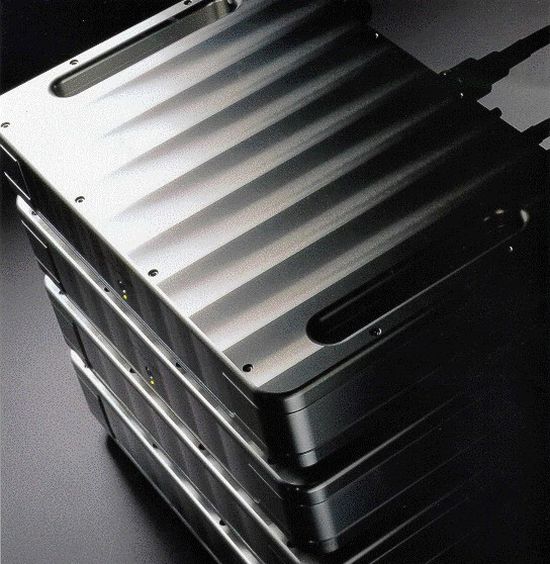
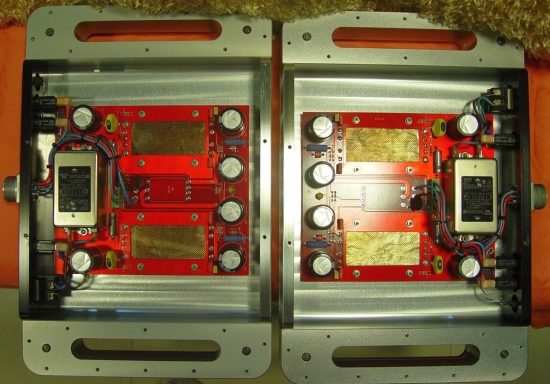
Above The two model 12 power supplies without hoods. Note that the main switching units have apparently been removed.
Model 112
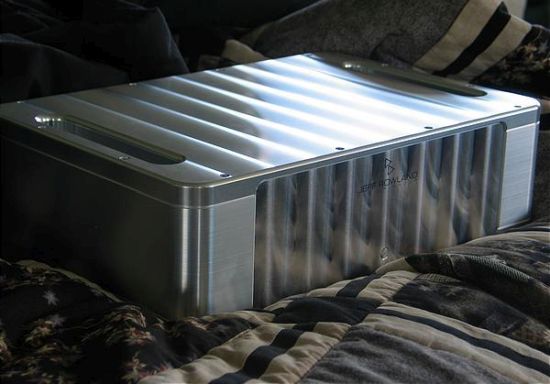
The Model 112 is a simplified version of the model 10 in which the switched power supply has been replaced by a linear power supply (toroid transformer and capacitors). The model 112 was amongst the first amps in which the new LM3886 IC’s were used in place of bipolar transistors. These IC’s not only carry out the amplification but also allow extremely accurate bias and temperature control and also occupy very little circuit “real estate,” dramatically reducing capacitive and dielectric storage effects, as well as simplifying the overall signal path. Also novel is the application of a so called Power Buss in which positive and negative DC current is transferred to each output device by dual polarity. Within these buss bars, opposite phases are carried side by side, the two signal halves separated by a tiny 9 mil insulator. These bars can be easily identified as the bright red/orange metal bars running across the inside of the amp. One common question is whether the output section of the amplifier is biased into Class-A operation. Technically, the answer is “yes,” as the exceptional linearity of the output section design achieves the advantages of pure Class-A operation. Using the “Intelligent Power Transistor with Gain” system keeps the output section properly biased at all times to eliminate crossover distortion caused by the output transistors during turn-on and turn-off.
Sound
Although I haven’t heard the 112 in my own setup, I think I still have a pretty good idea of what it should sound like as my Model 10’s switched power supply broke down and no matter what the importer tried, couldn’t be fixed. In the end the amp went back to Jeff Rowland after which the man himself installed a linear power supply in place of the problematic switched one. The inporter first didn’t tell me but I immediately noticed the difference in weight when I lifted the power supply. And it wasn’t only the weight that had changed: the sound was also completely different. I wouldn’t say worse, but comletely transformed nevertheless. At the time I had a problematic room and very early B&W N804’s that had slow and boomy bass. The original Model 10 was perfect in tightening the bass andf providing a nice speedy and rhythmic sound. The modified Model 10 sounded much more like the early Rowland amps: full, warm, colourful and a bit thick and slow in the bass. Although I now found the amp more natural sounding and in fact amazing with symphonical music, I found the rhythm, drive and speed seriously impaired so I returned the amp. After that I got Model sixes and they were again at least as speedy as the Model 10 was and even more rhythmic, with the added benefit of greater dynamics and more involvement while maintaining fluidity and smoothness as well as the sublime soundstage layering.
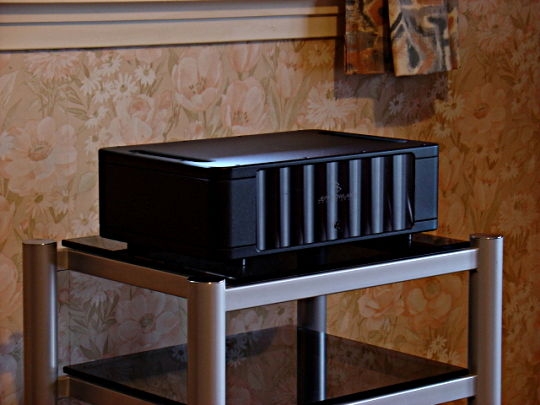
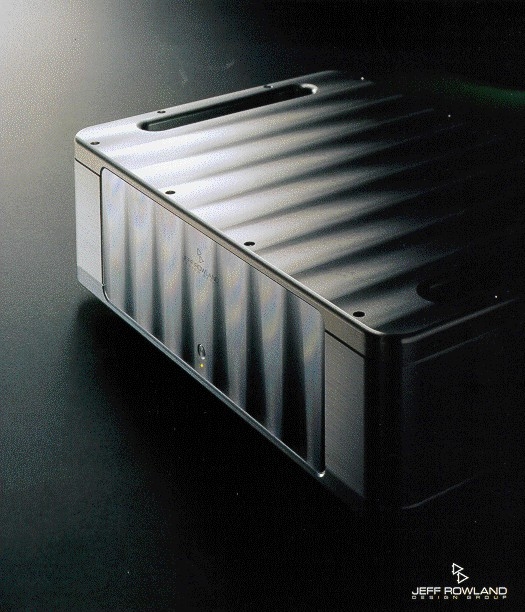
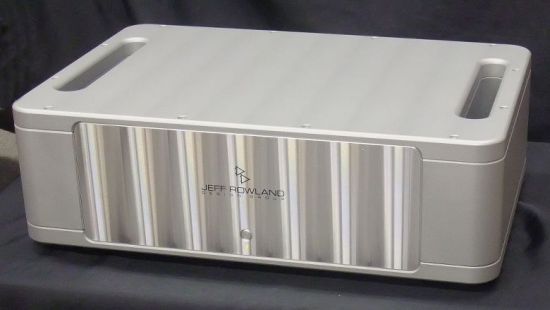
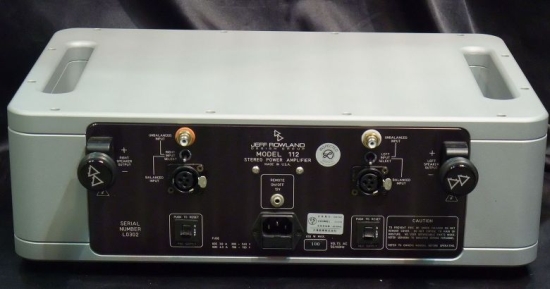
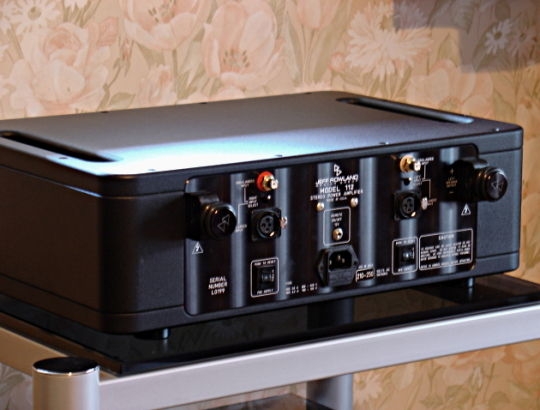
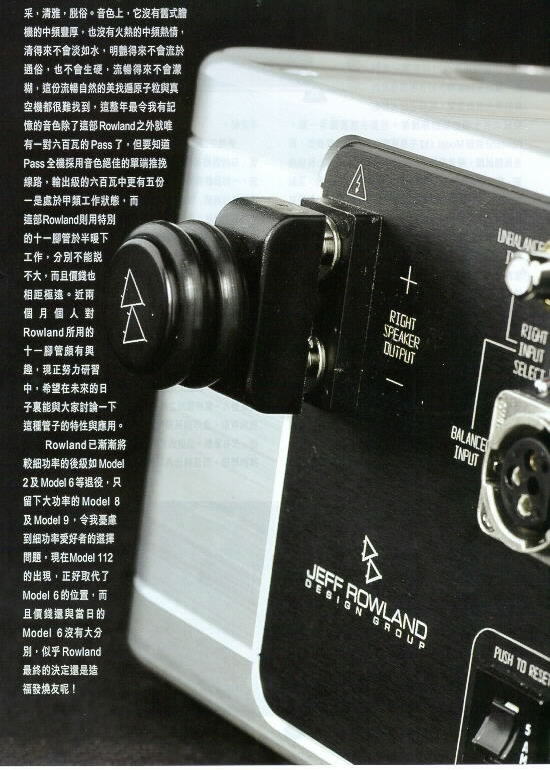
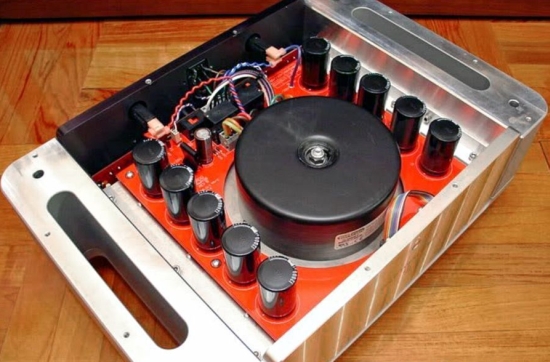
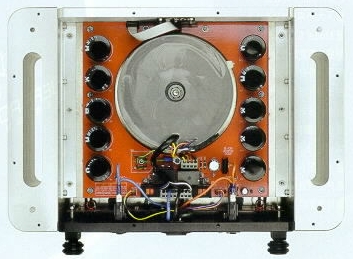
Model 10 Features
XLR input connectors for balanced (Differential Mode) system configuration.
RCA input Connectors for unbalanced system configurations.
Selectable overall gain of 26 or 32 dB.
User selectable switching between balanced and unbalanced connections.
12V remote ON/OFF power switching connector.
Automatic temperature stabilizing circuitry maintains constant operating temperature.
CE approved speaker output connectors requiring no tools for tight connections.
Separate power supply featuring 2nd generation high-speed switch mode circuit design.
Automatic bias adjustment maintains optimal bias setting regardless of source material or loudspeaker load.
Standby power condition reduces warm-up time.
Fail-safe operation provided by user-resetable thermal circuit breakers located on power supply rear panel.
Quiet, transient-free operation during power and function mode switching.
Automatic input muting under anomalous input or output operating conditions.
Fully-balanced Differential Mode circuit topology implemented from input to output.
Low resonance, structurally integrated chassis constructed of precision-machined aircraft grade aluminum.
Model 10 Technical Specifications
Output Power:
Continuous RMS watts
@ 8 ohms 150 watts
@ 4 ohms 275 watts
Power Bandwidth:
DC to 160 kHz, -3 dB
Slew Rate:
30 volts/microsecond
THD + No THD + Noise:
<.008%
Damping Factor:
>60, 20 to 20 kHz
Gain (1 watt, 8 ohms):
User Selectable Internal Jumper, 26 dB or 32 dB
Input Impedance:
40k ohms
Common Mode Rejection Ratio:
>80 dB, 20 – 20 kHz
Absolute Phase:
Phase-Inverted
Power Consumption:
85 watts idle,
770 watts maximum
Both Channels Driven Simultaneously at Full Output Power
Inputs:
User Selectable, 2 x Balanced XLR 2 x Unbalanced RCA
Outputs:
One Pair Binding Posts per Channel
Amplifier Section Dimensions:
17.5” W x 11.7” D x 3.1” H 44.5cm W x 33.5cm D x 6.5cm H
Amplifier Section Weight:
30 lbs.
13.4 kg
Power Supply Dimensions:
17.5” W x 11.7” D x 3.1” H 44.5cm W x 33.5cm D x 6.5cm H
Power Supply Weight:
32 lbs. 14.3 kg
Shipping Dimensions:
24” W x 22” D x 13” H
61cm W x 56cm D x 33cm H
Shipping Weight:
73 lbs.
32.6 kg
Model 12 Features
XLR input connectors for balanced (Differential Mode) system configuration.
RCA input Connectors for unbalanced system configurations.
Selectable overall gain of 26 or 32 dB.
User selectable switching between balanced and unbalanced connections.
12V remote ON/OFF power switching connector.
Automatic temperature stabilizing circuitry maintains constant operating temperature.
CE approved speaker output connectors requiring no tools for tight connections.
Separate power supply featuring 2nd generation high-speed switch mode circuit design.
Automatic bias adjustment maintains optimal bias setting regardless of source material or loudspeaker load.
Standby power condition reduces warm-up time.
Fail-safe operation provided by user-resetable thermal circuit breakers located on power supply rear panel.
Quiet, transient-free operation during power and function mode switching.
Automatic input muting under anomalous input or output operating conditions.
Fully-balanced Differential Mode circuit topology implemented from input to output.
Low resonance, structurally integrated chassis constructed of precision-machined aircraft grade aluminum.
Model 12 Technical Specifications
Output Power:
Continuous RMS watts
@ 8 ohms 200 watts
@ 4 ohms 350 watts
Power Bandwidth:
DC to 160 kHz, -3 dB
Slew Rate:
30 volts/microsecond
THD + No THD + Noise:
<.008%
Damping Factor:
>100, 20 to 20 kHz
Gain (1 watt, 8 ohms):
User Selectable Internal Jumper, 26 dB or 32 dB
Input Impedance:
40k ohms
Common Mode Rejection Ratio:
>80 dB, 20 – 20 kHz
Absolute Phase:
Phase-Inverted
Power Consumption (per channel):
100 watts idle,
530 watts maximum
Both Channels Driven Simultaneously at Full Output Power
Inputs: Inputs:
User Selectable, 2 x Balanced XLR 2 x Unbalanced RCA
Outputs:
One Pair Binding Posts per Channel
Amplifier Section Dimensions:
17.5” W x 11.7” D x 3.1” H 44.5cm W x 33.5cm D x 6.5cm H
Amplifier Section Weight:
30 lbs.
13.4 kg
Power Supply Dimensions:
17.5” W x 11.7” D x 3.1” H 44.5cm W x 33.5cm D x 6.5cm H
Power Supply Weight:
32 lbs. 14.3 kg
Shipping Dimensions:
24” W x 22” D x 13” H
61cm W x 56cm D x 33cm H
Shipping Weight:
73 lbs.
32.6 kg
Model 112 Features
XLR input connectors for balanced (Differential Mode) system configuration.
RCA input Connectors for unbalanced system configurations.
Selectable overall gain of 26 or 32 dB.
User selectable switching between balanced and unbalanced connections.
12V remote ON/OFF power switching connector.
Automatic temperature stabilizing circuitry maintains constant operating temperature.
CE approved speaker output connectors requiring no tools for tight connections.
Separate power supply featuring 2nd generation high-speed switch mode circuit design.
Automatic bias adjustment maintains optimal bias setting regardless of source material or loudspeaker load.
Standby power condition reduces warm-up time.
Fail-safe operation provided by user-resetable thermal circuit breakers located on power supply rear panel.
Quiet, transient-free operation during power and function mode switching.
Automatic input muting under anomalous input or output operating conditions.
Fully-balanced Differential Mode circuit topology implemented from input to output.
Low resonance, structurally integrated chassis constructed of precision-machined aircraft grade aluminum.
Model 112 Technical Specifications
Output Power:
Continuous RMS watts
@ 8 ohms 150 watts
@ 4 ohms 275 watts
Power Bandwidth:
DC to 160 kHz, -3 dB
Slew Rate:
30 volts/microsecond
THD + No THD + Noise:
<.008%
Damping Factor:
>60, 20 to 20 kHz
Gain (1 watt, 8 ohms):
User Selectable Internal Jumper, 26 dB or 32 dB
Input Impedance:
40k ohms
Common Mode Rejection Ratio:
>80 dB, 20 – 20 kHz
Absolute Phase:
Phase-Inverted
Power Supply:
500 VA toroidal transformer with 100,000 MFD total storage capacitance.
Regulated frontend supply.
Power Consumption:
75 watts idle,
700 watts maximum
Both Channels Driven Simultaneously at Full Output Power
Inputs:
User Selectable
2 x Balanced XLR
2 x Unbalanced RCA
Outputs:
One Pair Binding Posts per Channel
Dimensions:
17.5” W x 11.7” D x 5.2” H
44.5cm W x 33.5cm D x 14.5cm H
Weight:
55 lbs.
24.5 kg
Shipping Dimensions:
24” W x 22” D x 13” H
61cm W x 56cm D x 33cm H
Shipping Weight:
65 lbs.
29.4 kg
More Jeff Rowland
Jeff Rowland Company Special Main Page
Jeff Rowland Company Special Power Amplifiers
Class AB vs Class D – Model 525 compared to Model 201, Model 10 and Model 6
INTERESTING junk….switching power supply, plastic connectors, cover it all with beautiful chassis and face plate to make the owner listen with their eyes not their ears